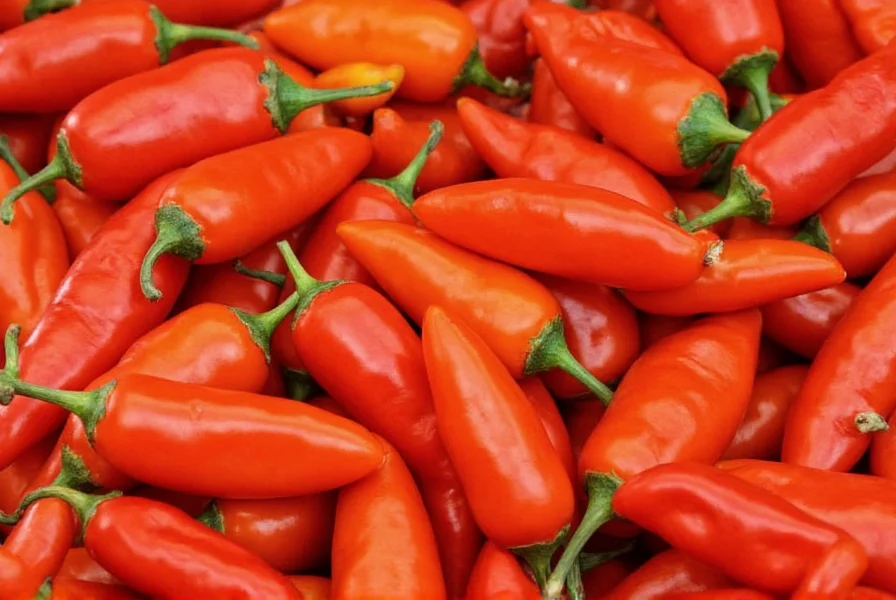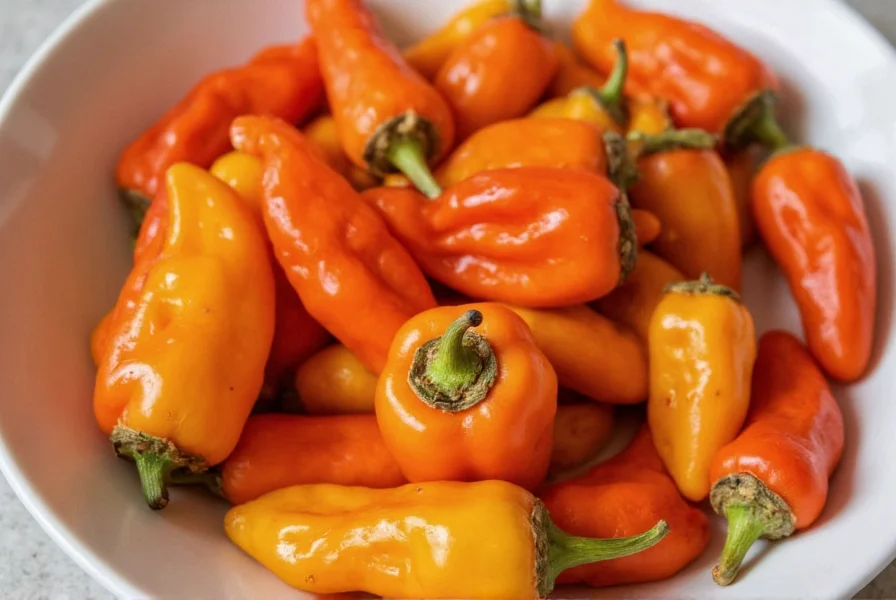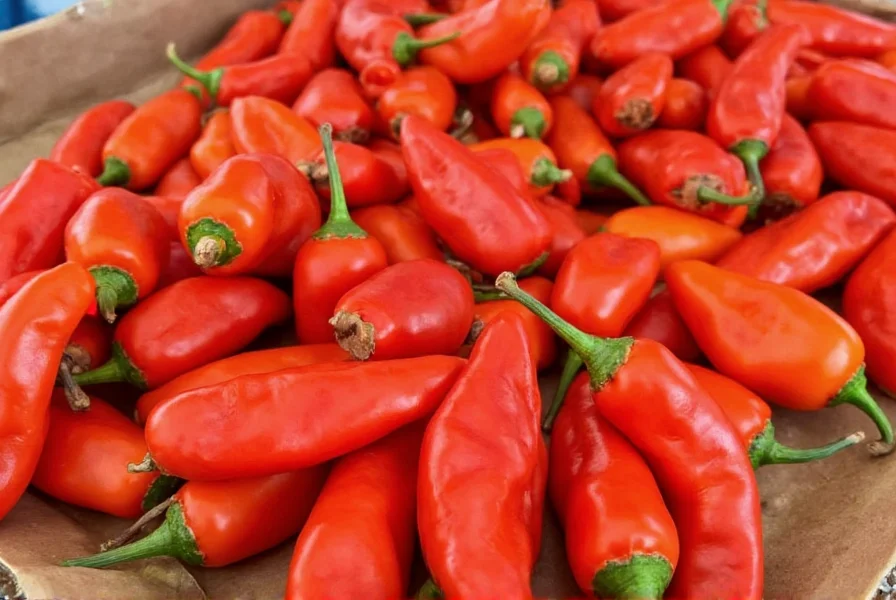Drying habanero peppers preserves their intense heat and unique fruity flavor while extending shelf life up to one year. This tropical chili, known for its floral notes and searing heat, transforms when dried, developing deeper, smokier characteristics perfect for sauces, rubs, and spice blends. Whether you've harvested your own peppers or bought more than you can use fresh, drying provides an excellent preservation method that maintains most of the capsaicin content responsible for habanero's signature burn.
Why Dry Habanero Peppers?
Fresh habaneros typically last only 2-3 weeks in the refrigerator, but properly dried peppers maintain their potency for 6-12 months. The drying process concentrates flavors while preserving the capsaicinoids that give habaneros their heat. Dried habaneros offer several advantages over fresh:
- Space-efficient storage compared to fresh peppers
- Intensified, complex flavor profile with smoky notes
- Versatility in cooking applications (powders, flakes, infusions)
- Year-round availability of seasonal peppers
- Easier handling with reduced risk of accidental oil transfer
Safety First: Handling Extremely Hot Peppers
Habaneros rank between 250,000-350,000 Scoville Heat Units, making proper safety precautions essential. Before starting the drying process:
- Always wear nitrile or latex gloves (regular kitchen gloves may not prevent oil absorption)
- Avoid touching your face, especially eyes and nose, during handling
- Work in a well-ventilated area to prevent inhaling capsaicin particles
- Use dedicated cutting boards and tools that won't transfer oil to other foods
- Wash hands thoroughly with soap and water after handling, even when wearing gloves
If you accidentally get habanero oil on your skin, wash immediately with dish soap or apply milk to neutralize the burn. For eye exposure, flush with water for 15 minutes and seek medical attention if irritation persists.

Preparing Habaneros for Drying
Proper preparation ensures optimal drying results and preserves flavor:
- Selection: Choose firm, brightly colored habaneros without blemishes or soft spots. Fully ripe red, orange, or yellow peppers work best.
- Cleaning: Gently wash peppers under cool water and pat completely dry with paper towels. Moisture on the surface prolongs drying time.
- Stem Removal: Cut stems from peppers while wearing gloves. Some prefer leaving stems intact for stringing during air drying.
- Seeding (Optional): Remove seeds and white membranes if you prefer milder heat. Remember that most capsaicin concentrates in these areas.
- Slicing: For faster drying, slice peppers lengthwise into quarters. Whole peppers take significantly longer to dry completely.
Comparing Habanero Pepper Drying Methods
| Method | Time Required | Equipment Needed | Best For | Heat Retention |
|---|---|---|---|---|
| Food Dehydrator | 8-12 hours | Dehydrator, trays | Most reliable results | Excellent (90-95%) |
| Oven Drying | 6-10 hours | Oven, baking sheet | Quick drying without special equipment | Good (85-90%) |
| Air Drying | 3-4 weeks | String, warm dry space | Traditional method, no energy cost | Fair (80-85%) |
| Sun Drying | 2-3 weeks | Screen, covered area | Dry climates with low humidity | Poor (70-75%) |
Step-by-Step Drying Instructions
Using a Food Dehydrator (Recommended Method)
- Arrange prepared habanero pieces in a single layer on dehydrator trays, ensuring no pieces overlap
- Set temperature to 125°F (52°C) - higher temperatures may cook rather than dry peppers
- Dry for 8-12 hours, checking periodically after 6 hours
- Peppers are done when they snap easily rather than bend
- Allow to cool completely before storage to prevent condensation
Oven Drying Method
- Preheat oven to its lowest setting (typically 150°F/65°C)
- Arrange pepper pieces on a parchment-lined baking sheet
- Prop oven door open 2-3 inches using a wooden spoon for air circulation
- Dry for 6-10 hours, checking every 2 hours after the 4-hour mark
- Rotate trays periodically for even drying
- Test for doneness by attempting to snap a pepper piece
Air Drying Method
- Thread habaneros through the stem area onto a thin string or dental floss
- Leave 1-2 inches between peppers for air circulation
- Hang in a warm, dry, well-ventilated area away from direct sunlight
- Ideal conditions: 70-80°F with low humidity (below 60%)
- Allow 3-4 weeks for complete drying
- Peppers should feel brittle and lightweight when finished

Proper Storage of Dried Habaneros
Correct storage prevents moisture absorption and maintains quality:
- Store completely cooled peppers in airtight glass jars or vacuum-sealed bags
- Include a food-safe desiccant packet to absorb any residual moisture
- Keep in a cool, dark place away from heat sources and light exposure
- For longest shelf life, store in the freezer (peppers won't freeze solid but will maintain potency)
- Check periodically for any signs of moisture or mold development
Properly stored dried habaneros maintain peak quality for 6-12 months. While they remain safe beyond this timeframe, flavor and heat intensity gradually diminish. Discard any peppers showing signs of mold, unusual odors, or significant color changes.
Culinary Uses for Dried Habanero Peppers
Dried habaneros offer versatile applications in cooking:
- Rehydrating: Soak in hot water for 20-30 minutes before using in sauces or stews
- Pepper Flakes: Crumble dried peppers for immediate use in dishes
- Spice Powder: Grind completely dry peppers in a dedicated spice grinder
- Infused Oils: Steep dried pieces in oil for flavored cooking oil (refrigerate for safety)
- Homemade Hot Sauce: Blend rehydrated peppers with vinegar and other ingredients
Remember that dried habaneros are more concentrated than fresh, so use approximately one-third the amount you would of fresh peppers. The drying process transforms their flavor profile, adding subtle smokiness while maintaining their distinctive fruity notes.
Troubleshooting Common Drying Issues
Address these frequent problems when learning how to dry habanero peppers properly:
- Uneven Drying: Rotate trays frequently and ensure proper spacing between peppers
- Mold Development: Indicates insufficient drying; increase airflow or temperature slightly
- Peppers Becoming Leathery: Temperature too low; increase slightly while maintaining airflow
- Loss of Vibrant Color: Exposure to direct sunlight or excessive heat during drying
- Reduced Heat Level: Over-drying or excessive heat; maintain temperatures below 135°F











 浙公网安备
33010002000092号
浙公网安备
33010002000092号 浙B2-20120091-4
浙B2-20120091-4